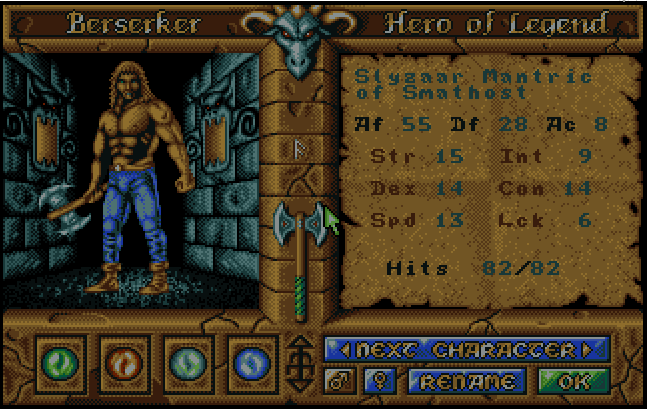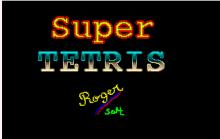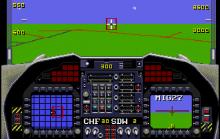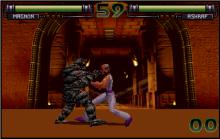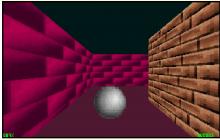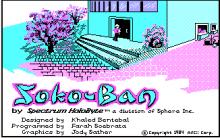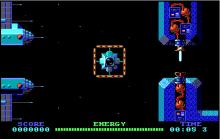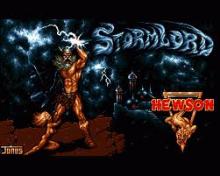The Four Crystals of Trazere
How to play The Four Crystals of Trazere
Each game uses different controls, most Amiga games use both mouse and keyboard.
The Four Crystals of Trazere Description
Legend, also known as The Four Crystals of Trazere in the United States, is an isometric fantasy role-playing game released in 1992 for the PC, Amiga, and Atari ST. It was developed by Pete James and Anthony Taglione for the then UK-based Mindscape, and published by The Software Toolworks. In the game, the player controls four adventurers through labyrinth dungeons as they venture on an epic quest to save the land of Trazere from an awakening evil that threatens to destroy it.
In this game, you control four adventurers, a Berserker, a Troubadour, an Assassin, and a Runemaster, who are on a quest to rid the world of a darkness that plagues it. From the game's intro...
A thousand years ago, when magic was wild and new, there was the time of the great Legend... An evil being as old as the World was stirring in its sleep, dreaming dreams of terror and darkness. Those dreams were so powerful that they made waves on the shore of our reality. Those touched by the thoughts of the dark one became as one with it, and rose up in the raiment of Chaos! And they made war upon the land of Trazere, slaying and despoiling all in their path... There was no hope, until the day the Gods sent us the four adventurers. This is their story, this is the Legend.
— Game Intro, Legend
Starting a new game
Upon starting a new game, you are shown the four characters you will use. You must use the four characters assigned to you: a Berserker, a Troubadour, an Assassin, and a Runemaster. The starting stats for each character are predetermined, but some customization is allowed. By selecting certain elemental attributes to assign to each character (Earth, Fire, Wind, and Water,) certain stats can be raised and lowered slightly. Each character can also be renamed, and you can choose between a male or female character, both of which are equal except for their animations. After you've made all your preparations, your party is given default equipment and placed on the world map.
The characters
Each of the four classes is unique. Each one has a special power given to it that sets it apart from the other classes, in addition to unique animations. Additionally, each class has special powers granted to it.
Berserker
The Berserker is the leader of the four adventurers. This class is the strongest physical class of the game and carries the party through the early levels. The Berserker class can use the widest variety of weapons and armor of the four classes. The Berserker uses weapons such as swords and axes to attack, and can wield almost all the armor in the game. The Berserker gets a bonus added to its attack power, which lets it do more damage than other characters even with identical stats. The Berserker's special power is Berserker Rage, which lets the Berserker attack very quickly, as if under the effect of a Speed spell. When a Make Weapon spell is cast on the Berserker, it wields the Mystic Axe.
Troubadour
The Troubadour is a very average character. This class can wield swords as weapons and can wear a lot of the armor in the game, although it cannot equip some of the best items. The Troubadour's special ability is Bardish Melody, which, if an instrument is equipped, allows the Troubadour to play a magical song that enhances the party's power. There are 8 songs in the game, 7 of which raise the party's stats (Either Dexterity, Strength, Armor Class, Intelligence, Constitution, Speed, or Defense.) The final song, which the Troubadour starts with, regenerates the party's HP. All stat boosting songs must be bought from the Minstrel, who moves to a different town each day. While playing a song, the Troubadour gets twice the boost out of it than the rest of the party. The songs' power is dependent on the level of the Troubadour. When a Make Weapon spell is cast on the Troubadour, it wields the Mystic Blade.
Assassin
The Assassin class wields daggers and light armor. Assassins generally have high dexterity and speed but low strength. The Assassin's special power is Hide in Shadow, which allows the Assassin to become nearly invisible. In this state, the Assassin will be targeted less by enemies. The Assassin also has another unique ability; when the Assassin strikes a foe in the back with a dagger-type weapon equipped, the damage done will be multiplied by four. Although this is often difficult to implement intentionally in the game, the fact that the Assassin can sneak around with drawing attention means that the Assassin will often be able to inflict strikes to the back without player intervention. When a Make Weapon spell is cast on the Assassin, it wields the Mystic Dagger.
Runemaster
The Runemaster is the class in the game that the player will most likely control during battle, due to its spellcasting ability. The Runemaster is a physically weak character who can wield only staves as weapons and wear only the most basic armor, although this class can equip and use wands and rods. The Runemaster can create and cast spells to aid the party in battle. By equipping a mixing bowl, the Runemaster can use known runes and ingredients to create powerful spells. In battle, the Runemaster can use its special ability, Cast Spell. This allows the Runemaster to cast any spells it has made. The spells have a variety of effects, both beneficial to your allies and harmful to your enemies. The Runemaster does not cast spells if the player does not instruct them to do so, so the Runemaster is often controlled by the player in battle. When a Make Weapon spell is cast on the Runemaster, it wields the Mystic Staff.
The world map
The world map shows the land of Trazere and all the cities on it. The player's party is represented by a tan banner with 5 diamonds on it. To move to a location on the map, the player simply clicks on their destination. The world map also has a calendar on it. Time passes as the party travels across the world map, represented by a sun and moon moving across the top of the screen. At midnight of every day, red enemy banners appear on the world map and try to attack the cities. If the party does not attack and defeat these banners by meeting them on the world map, the enemy banners will move to the cities of Trazere and attempt to overtake them. Each city has a level of defense depending on how many men are stationed there: Heavily Defended, Well Defended, Lightly Defended, or Barely Defended. The lower the defense level, the easier it is for an enemy banner to capture a city. When a city is captured, the party will not be allowed to enter it or move within a certain range of it. This can obstruct the party, as captured cities can block your passage around the map or prevent the party from reaching certain shops in certain towns. Fortunately, four keeps exist in the land of Trazere and house the armies that fight the enemies. The keeps dispatch allied banners that do not actually engage enemy units but instead travel to cities to either reinforce them or reclaim them from enemy possession. The banners move to cities and increase their defense level. If a city is captured, the banners will liberate the city and put it at a defense level of Barely Defended. The keeps do not have an unlimited supply of soldiers, so if the enemy banners are allowed to run freely and capture many cities, there will eventually be no soldiers left. However, money can be donated to the keeps to keep the supply of men up if necessary.
Cities
The cities of Trazere offer many services. Each city varies in what it has to offer. The buildings a city can potentially have are:
Blacksmith
You can buy and sell weapons and armor here. The item selection of the blacksmiths varies from day to day, as well as from town to town. Generally, larger towns have more variety and better items than the smaller towns. When selling items, you will get a higher price if the blacksmith does not already have the item in stock.
The articifer deals with arcane and musical objects, such as potions, scrolls, wands, instruments, etc. The item selection of the artificers varies from day to day, as well as from town to town. Generally, larger towns have more variety and better items than the smaller towns.
The Apothecary is where the Runemaster buys ingredients to use for its spells. Each apothecary has a different selection of items and price for each item, but each town's apothecary keeps the same inventory for the entire game.
The Holy temple is where you can resurrect fallen characters or purchase luck. Resurrecting the dead is free of charge, but obtaining luck costs money. By paying for prayers costing 25 gold, each character has a chance to increase their luck. Prayers usually work better when bought in bulk, so a payment of 400 gold will usually raise the luck to the maximum of 16 while a single payment of 25 gold may only give one luck point half of the time. Strong potions of healing can also be purchased here for 75 gold.
Taverns are vital to your completion of the game. By paying the barkeep 10 gold, you can get hints on how to complete the next part of the game. Barkeeps give out passwords and names at certain parts of the game, but they only say them once, so it's important to write down any important information they give. If they have nothing important to say, they will "rip you off" and tell you a semi-humorous saying. Taverns also house the Minstrel, who sells you songs for the Troubadour to play. The Minstrel is at a different town's tavern each day, but it's easy to find him. Each tavern gives you the option to talk to the Minstrel. If the Minstrel is present in that town, you will speak to him where you can purchase songs for 500 gold each. If the Minstrel is not present, the barkeep will tell you where you can find him.
The Guild is a unique building housed in the city of Treihadwyl. The Guildmaster there offers to train your levels, change your clothing, or change your name. If a character has acquired enough EXP by killing monsters to gain another level, the Guildmaster will charge 500 gold times the character's current level for training. The character will get a stat increase in two areas as well as a level and an HP increase. Each character can also change the colors of their clothing as it appears in the dungeons and battles of the game. Additionally, each character can be renamed at the Guild. The Guild is also home to the first dungeon of the game.

The Four Crystals of Trazere - additional information







